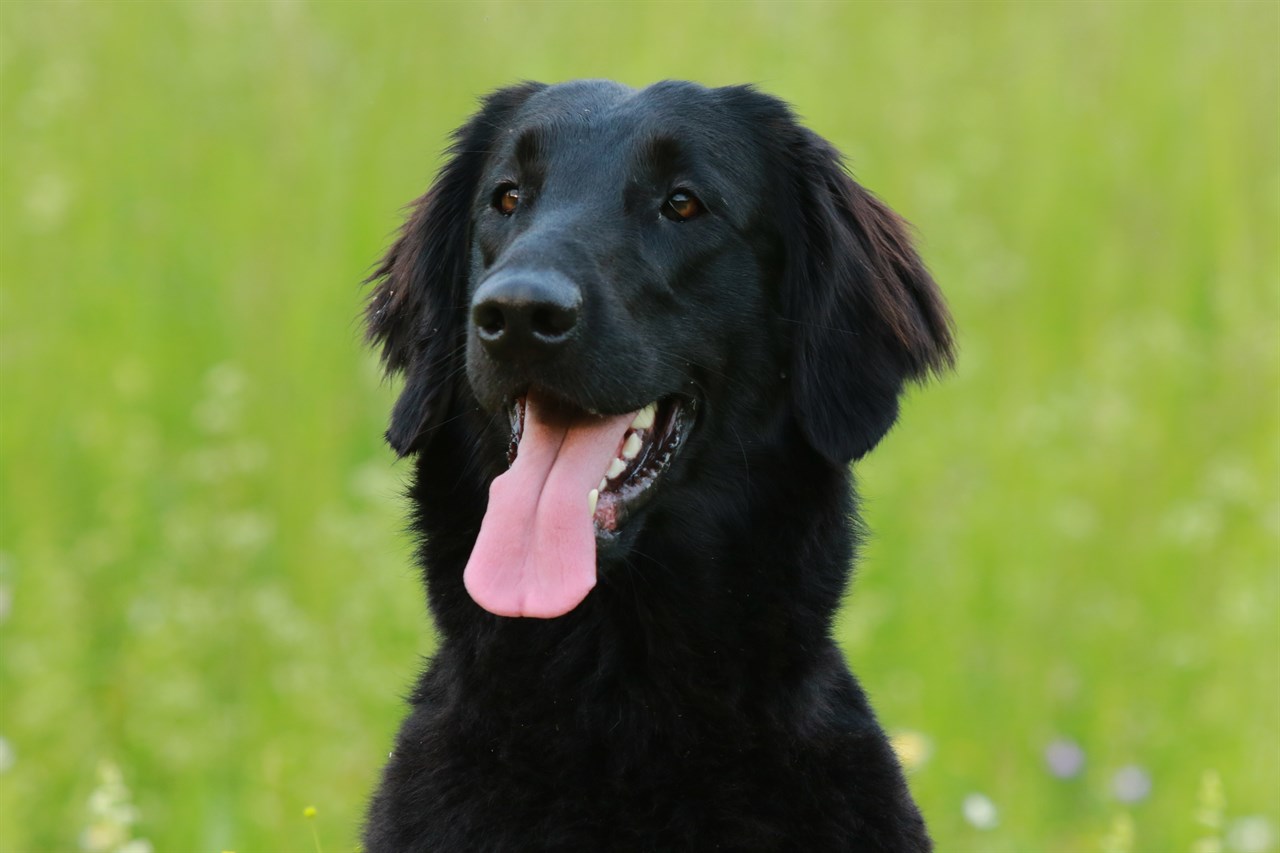Feeding Habits and Food Requirements of the Flat-Coated Retriever

Proper nutrition is essential for the health and well-being of Flat-Coated Retrievers. Understanding their feeding habits and food requirements can help you provide them with a balanced and nutritious diet tailored to their needs.
Feeding Habits
Flat-Coated Retrievers are generally enthusiastic eaters and tend to have healthy appetites. However, individual eating habits can vary. Here are some common feeding habits to keep in mind:
- Meal Size: Flat-Coated Retrievers may have larger meal sizes, especially during periods of high activity or growth (such as puppyhood). It's essential to portion their meals appropriately to maintain a healthy weight.
- Fast Eaters: Some Flat-Coated Retrievers are fast eaters, which can lead to digestive issues like bloating or upset stomach. Using slow-feed bowls or interactive feeders can help slow down their eating pace.
- Food Motivation: These dogs are often food-motivated and responsive to treats during training. Use this motivation to your advantage when teaching commands and tricks.
- Water Consumption: Ensure they have access to clean, fresh water at all times, as they may drink more water, especially after exercise or during warm weather.
Food Requirements
To meet the dietary needs of your Flat-Coated Retriever, consider the following factors:
- Age: Puppies, adult dogs, and seniors have different nutritional requirements. Choose a dog food formula that is appropriate for your dog's life stage.
- Activity Level: Active dogs, including those participating in agility or other physically demanding activities, may require more calories and protein to support their energy needs.
- Health Conditions: Some dogs may have specific dietary requirements due to allergies, sensitivities, or medical conditions. Consult with your veterinarian for guidance if you suspect any dietary issues.
- Weight Management: Maintaining a healthy weight is crucial for the overall health of Flat-Coated Retrievers. Be mindful of portion sizes and monitor their body condition to adjust their food intake as needed.
- Quality Ingredients: Choose high-quality commercial dog food that lists meat or meat meal as the primary ingredient. Avoid foods with excessive fillers or artificial additives.
- Feeding Schedule: Establish a consistent feeding schedule, typically with two meals per day for adult dogs. Puppies may require more frequent meals.
- Avoid Human Foods: While it may be tempting to share human food with your dog, it's essential to avoid giving them foods that can be toxic or harmful to dogs. Stick to a balanced dog food diet recommended by your veterinarian.
- Treats: Use treats sparingly during training, and choose healthy, low-calorie treats to prevent excessive weight gain.
Transitioning to New Food
If you decide to switch your Flat-Coated Retriever to a new food or diet, do so gradually over a period of about 7-10 days. This gradual transition helps prevent digestive upset and allows your dog to adjust to the new food.
Consult with a Veterinarian
The dietary needs of Flat-Coated Retrievers can vary based on their age, activity level, and individual health. Consulting with your veterinarian is crucial for determining the best diet and feeding plan for your dog. Your vet can provide personalized recommendations and monitor your dog's health to ensure they receive the proper nutrition throughout their life.
In conclusion, providing your Flat-Coated Retriever with a balanced and nutritionally appropriate diet is essential for their overall health and well-being. Pay attention to their individual eating habits, adjust portion sizes as needed, and consult with a veterinarian to ensure you're meeting their specific dietary requirements throughout their life stages.
Flat Coated Retriever puppies for sale
- Find Flat Coated Retriever puppies for sale in ACT
- Find Flat Coated Retriever puppies for sale in NSW
- Find Flat Coated Retriever puppies for sale in NT
- Find Flat Coated Retriever puppies for sale in QLD
- Find Flat Coated Retriever puppies for sale in SA
- Find Flat Coated Retriever puppies for sale in TAS
- Find Flat Coated Retriever puppies for sale in VIC
- Find Flat Coated Retriever puppies for sale in WA